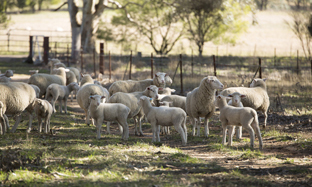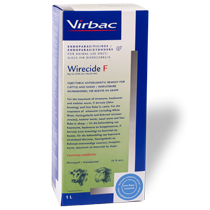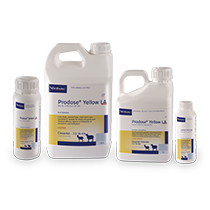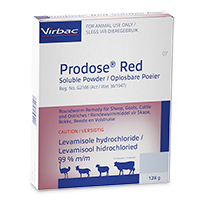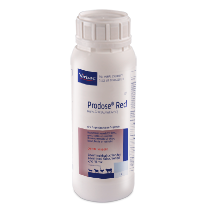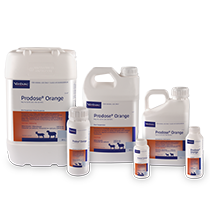
Wireworm Infestations in Sheep and Goats
Haemonchus contortus, known as wireworm, or “haarwurm” in Afrikaans, are parasitic infestations in sheep and goats. Being a blood sucking parasite, wireworm can cause excessive blood loss. Female wireworms grow up to 3 cm in length and can be identified by the blood-filled intestinal tract of the worm that is twisted around the lighter reproductive tract, giving it a “barber’s–pole” appearance. The males are smaller (around 15 mm) and pale pink. The female worm can lay up to 10 000 eggs in 24 hours.
How Infestation Affects Animals
Wireworm in sheep and goats pierce the lining of the animal’s abomasum. The worms are blood-sucking parasites that cause loss of albumin (a blood protein) and deplete the iron levels in the body. With lower iron levels, the animal cannot manufacture enough albumin and the sheep or goat suffers from anaemia or oedema (commonly called “bottle-jaw”). Even moderate infections of barber’s pole can have a marked effect on milk production of ewes and does lead to a retardation of growth in their lambs and kids. Other effects include lethargy, collapse, failure to gain weight and death. A break in the wool may also occur in acute outbreaks when stock becomes critically anaemic. In chronic disease, decreased food intake, weight loss and anaemia are commonly observed.
Signs of Infestation
Symptoms range from weight loss and weakening of the body to bottle jaw, a condition where fluids build up under the jaw. Anaemia can be spotted by looking at the animal’s mucous membranes of the eye, which may appear pale. Dung samples can be used to detect the presence of roundworm eggs. By being the most dominant roundworm in the summer rainfall areas, a high egg count could be indicative of a high wireworm infestation. Larval cultures will give the best indication. Immature wireworm also sucks blood and with a very high infestation, animals can become anaemic before eggs are detected in the dung!
Lifecycle of The Wireworm
Sheep and goats become infected with the worms when they graze and consume infective larvae, which develop into adult wireworms. The adult worms lay eggs in the animals’ digestive tract. The eggs are deposited onto the pasture through animal droppings. Once in the pasture, the eggs develop into larvae. The animals consume the larvae-infested pasture and the cycle continues. The parasite is especially active during warm and moist periods. Therefore, different stages of wireworm are difficult to determine as they are continually grazing new larvaes and they then develop within different stages inside the animal.
Adults can become arrested or inhibited inside the sheep or goat for varying periods (usually during winter). They resume activity when external environmental conditions become more favourable, for example, at the onset of spring, or when ewes and does have lowered resistance to worms, which happens around lambing and kidding and until 8 weeks after lambing.
Vulnerable Animals
Goats have poor immunity against wireworm while sheep, because the animals graze closer to the soil, are more susceptible to the parasite than cattle. Older sheep and goats have a higher immunity against wireworm, but lambs and kids are especially susceptible to the negative effects of infestation. Pregnant and lactating sheep and goats are also more prone to wireworm infestations. A low nutritional plane can cause a lowering of the animal's immune system, making it more susceptible to infestation.
Treatment
Treatment should be based on regularly taken dung samples (due to the different stages of the wireworm lifecycle that occur within the animal) or the use of FAMACHA technique of evaluating the mucous membrane of the eye. If animals are already anaemic, a remedy with a contact action should be used first and then followed up with a remedy with a systemic action.
View our range of products to treat infestations of wireworm in sheep and goats.

